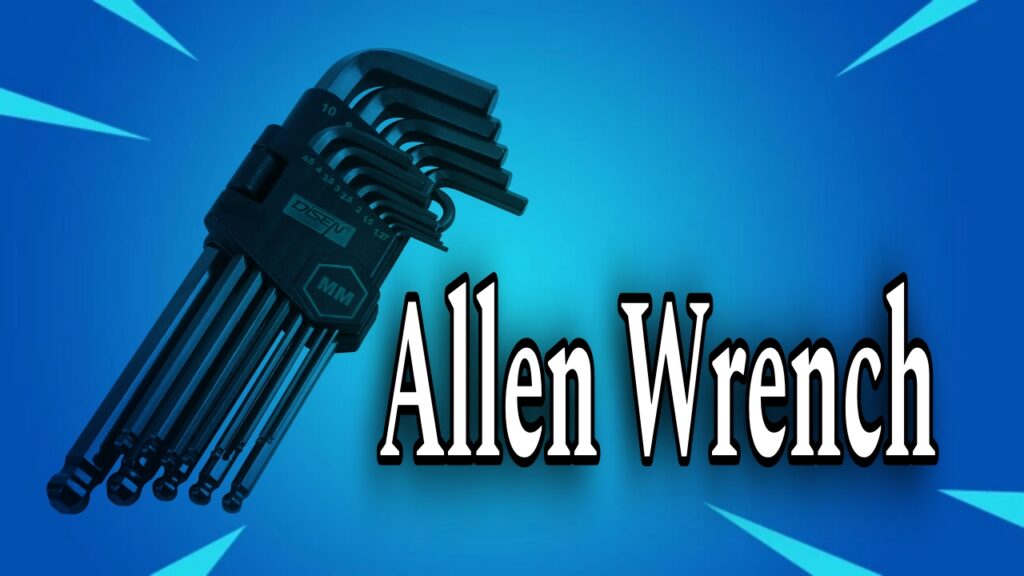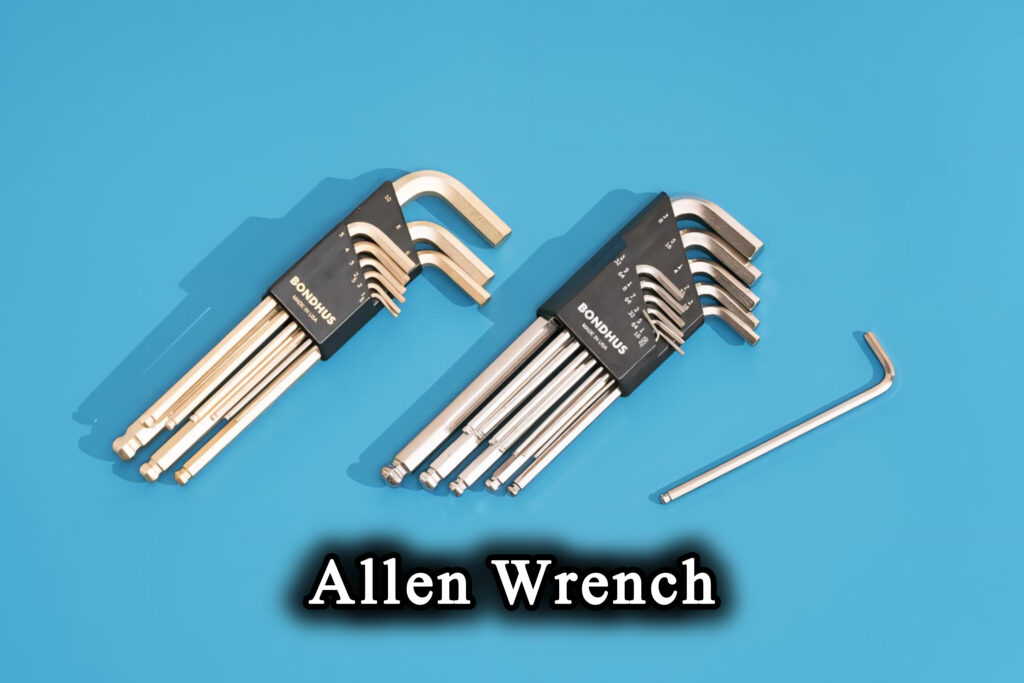
Allen Wrench
Introduction
If you have ever assembled fixtures, repaired a bicycle, or laboured with equipment, you probably have encountered an Allen wrench. Despite its ubiquity within international equipment, many still use this smooth but critical device. In this newsletter, we will address the most commonly asked questions about Allen wrenches, offering an entire manual on how they are used, sorted, and more. Whether you’re a DIY fanatic or an expert, this manual will help you make the most of your Allen wrench.
What Is an Allen Wrench?
An Allen wrench, additionally referred to as a hex key, is a small device designed to strengthen fasteners with hexagonal (six-sided) sockets. Its L-form makes it clean to cope with, and it is frequently utilized in packages where a screwdriver can’t reach or whatever is needed.
How Does an Allen Wrench Work?
An Allen wrench works by turning into the hexagonal recess of a fastener. The tool is inserted into the hole of the fastener, and turning the wrench causes the fastener to tighten or loosen. The brief arm of the wrench is used for added particular manipulation, while the long arm presents leverage for turning stubborn fasteners.
Common Uses of an Allen Wrench
Allen wrenches are commonly used in furniture, bicycles, and several systems meetings. They are especially beneficial in situations in which the fastener is recessed, which consists of the screws placed on motorbike pedals, fixtures factors, or a few kinds of plumbing furniture.
What Are the Various Sorts of Allen Wrenches?
There are several varieties of Allen wrenches, each top-notch for exact commitments.
- L-shaped Allen Wrench: The brand new and most commonplace type, characterized through its “L” form that offers every leverage and manipulation.
- T-control Allen Wrench: This type features a T-shaped handle that permits additional comfortable and effective torque utility.
- Ball-end Allen Wrench: These wrenches have a ball-original give-up that permits you to insert them immediately, making them perfect for tight or awkward regions.
- Fold-up Allen Wrench Set: This is a compact, transportable set of Allen wrenches that can fold properly into a small device for easy storage and accessibility.

What Sizes Do Allen Wrenches Come In?
Allen wrenches are a great range of sizes for residents and several fasteners. The sizes are generally measured in both millimetres or inches. Common sizes encompass:
- Metric Sizes: 1.5mm, 2mm, 2.5mm, 3mm, 4mm, 5mm, 6mm, etc.
- Majestic Sizes: 1/sixteen”, 1/eight”, 3/16″, 1/4, etc.
An entire set of Allen wrenches ensures you may address any pastime requiring special-sized fasteners.
How Do I Choose the Right Size Allen Wrench?
Choosing the correct period Allen wrench is essential for practical use. A wrench that is too small might also strip the fastener, the same time as one that is too massive received’t in form properly. Here’s the manner to choose the right length:
- Use a period chart: Many toolsets will include a length chart that suits the fastener length with the perfect wrench length.
- Check the fastener length: If you’re not sure of the scale, you can measure the width of the hexagonal socket to determine the right wrench.
- Use a hard and rapid: A full set of Allen wrenches in all sizes will prepare you for any situation.
Why Do Allen Wrenches Have a Ball End?
The ball forestall on positive Allen wrenches offers a particular advantage: it permits the wrench to be inserted into the fastener at an angle. This feature makes it less complicated to work in tight or awkward regions where an Allen wrench is challenging to apply. However, while ball-surrender wrenches are more available, they may provide better a buy torque than well-known Old-fashioned wrenches.
How Do You Properly Maintain an Allen Wrench?
To make sure your Allen wrenches very last and perform well, follow the safety guidelines:
- Keep them clean: Regularly smooth your wrenches to avoid dirt and particles.
- Store them nicely: Store your wrenches in a dry, prepared area to prevent rusting and loss.
- Abstain from over-fixing: Over-fixing a clasp with an Allen wrench can strip both the wrench and the latch, so be wary of applying an inordinate measure of pressure.
Are There Alternatives to Allen Wrenches?
While Allen wrenches are one of the most usually used gadgets for hexagonal screws, there are options, inclusive:
- Socket Wrenches with Hex Bits: This gadget is frequently utilized in car and mechanical paintings and can be more inexperienced for high-torque programs.
- Power Tools with Hex Driver Attachments: For large tasks, electric-powered or battery-operated drills with hex can use strain bits to update manual Allen wrenches, particularly for repetitive responsibilities.
Could I, at any point, Utilize an Ordinary Screwdriver Rather than an Allen Wrench?
It’s not supported to involve a customary screwdriver in the area of an Allen wrench. While a screwdriver can flip many types of screws, it received’t healthful securely right properly into a hexagonal recess and could damage each the fastener and the device. Using the appropriate Allen wrench ensures higher grip and management.
How Do I Know If My Fastener Requires an Allen Wrench?
If the fastener has a hexagonal socket, it requires an Allen wrench. Look for screws or bolts that have a round recess with six aspects. The fastener needs a particular device if it has a bypass, a well-known individual, or a flat-head layout.
What Are the Advantages of Using an Allen Wrench?
Allen wrenches offer several benefits, which include:
- Ease of use: The smooth layout makes them easy to cope with and manoeuvre.
- Compact length: Their small length allows for a smooth garage and portability.
- Effective for tight spaces: Allen wrenches’ L-form and ball-surrender designs make them best suited for use in constrained areas.
- Minimal damage to fasteners: When used effectively, Allen wrenches don’t cause as much wear and tear on fasteners as extraordinary machines.
What Are Some Safety Tips When Using an Allen Wrench?
To use an Allen wrench properly:
- Wearing defensive gloves can help prevent hand injuries, especially while managing tight or complicated fasteners.
- Ensure the wrench is securely in place: Ensure the wrench is completely inserted into the fastener to prevent slipping and capability damage.
- Avoid excessive stress: If the fastener is caught, using a lubricant or studying gentle warmth is better than forcing the wrench.
Conclusion
Allen wrenches are important tools that make many DIY duties and maintenance viable. Understanding their sorts, uses, and preservation will ensure you’re well-prepared for your subsequent project. Whether assembling furniture or fixing a motorcycle, knowing how to pick out and use an Allen wrench correctly will prevent time and frustration.
FAQs
Can I use an Allen wrench on any screw?
No, Allen wrenches are designed explicitly for hexagonal screws. They obtained artwork on screws with one in every-of-a-kind shapes.
How can I save you my Allen wrench from rusting?
Keep it dry and store it in a cool, dry location. Regular cleansing may also help prevent rust buildup.
Do I want to use lubricant whilst using an Allen wrench?
Ointment isn’t generally fundamental, however it might assist with relaxing got clasp and decrease wear on both the wrench and the latch.
What is the contrast between a ball-end Allen wrench and a customary one?
A ball-prevent Allen wrench allows you to work at a thought set, which is helpful in tight spaces. At the same time, an ordinary Allen wrench requires a single method.
Can I use an Allen wrench for car maintenance?
Yes, many car components use hex bolts that require an Allen wrench. However, large fasteners can also moreover require extra heavy-obligation gear.






